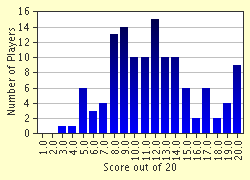Quiz Answer Key and Fun Facts
1. Before we begin, let's clear the air. This quiz is under the 'Opera' category, yet "Carmina Burana" is not an opera; what is it?
2. What do the words 'Carmina Burana' mean, anyway?
3. When was the "Carmina Burana" MANUSCRIPT (NOT the musical work) found?
4. Where was the "Carmina Burana" manuscript found?
5. Who or what group of people is purported to have authored the text?
6. Is the subject matter of "Carmina Burana" religious?
7. Who published the "Carmina Burana" collection and is therefore responsible for its existence?
8. Enough of the background info! Let's move on to the MUSICAL WORK entitled "Carmina Burana"; who composed it?
9. Is "Carmina Burana" the only musical opus this composer composed?
10. Excluding the introduction, how many parts are there in this musical work?
11. Which part contains the most erotic/sexually explicit lyrics?
12. In what language(s) is the text of "Carmina Burana" sung?
13. The soloists are Soprano, Baritone, and:
14. The soprano's solos come in which part(s) of "Carmina Burana"?
15. Which soloist sings only one solo in which the voice is the personification of a swan lamenting about being roasted on a spit in a tavern?
16. Of the three soloists, who has the most to sing?
17. "Carmina Burana" is scored for how many choruses?
18. There are several allusions to Greek and Roman mythology in "Carmina Burana".
19. "Carmina Burana" has never been staged.
20. Can you identify the most popular tune/song from "Carmina Burana"?
Source: Author
Triviasoprano
This quiz was reviewed by FunTrivia editor
Bruyere before going online.
Any errors found in FunTrivia content are routinely corrected through our feedback system.

